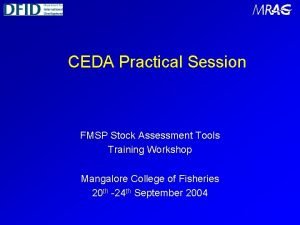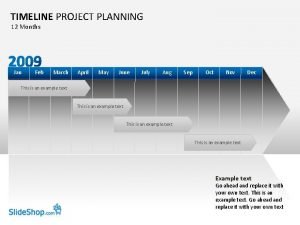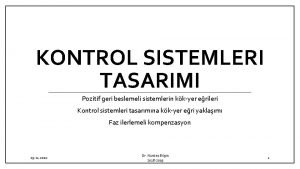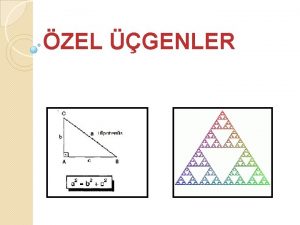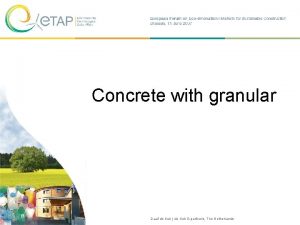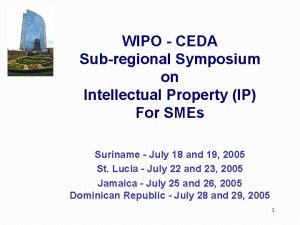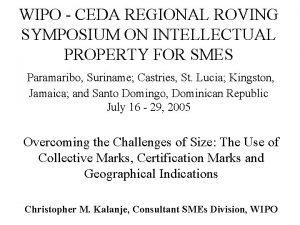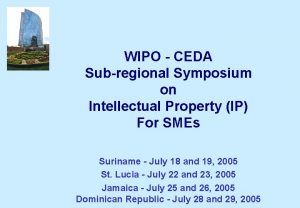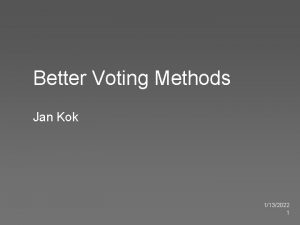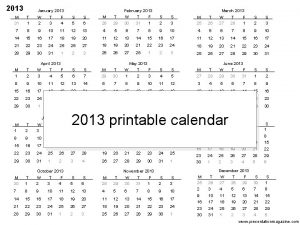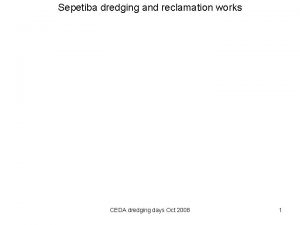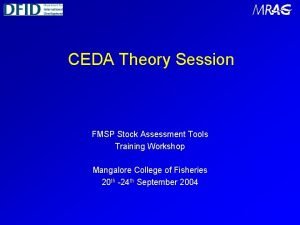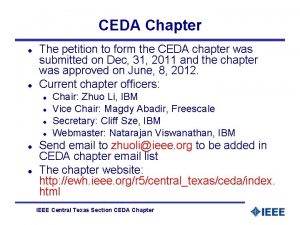Jan Kok Ceda R symposium March 1 2013


























- Slides: 26

Jan Kok Ceda. R symposium, March 1, 2013 Harmonized censuses: research prospects

Contents A look from family history/historical demography Popular and scholarly perceptions of the census Research challenges in historical demography: how can the census help? Netherlands Global

Popular perceptions of the census- George Cruikshank 1851


Does he live alone or in a family? Is he the head of the What isfamily? his nationality? Is he unmarried, widowed, divorced? Was he present in the house on the night of 31 December 1889? ?

Censustakers portrayed as weak and gullible men Census as ‘Big Brother’


Scholarly misgivings Census lags behind social reality (e. g. cohabitation) Census does not capture social complexity (e. g. households) Misreporting understudied Categories and questions change (too) often


Research challenges (…) the breach between the demographer and the census was complete… Is the role of censuses for historical demographers … over? The census seems to have become less en vogue as a source of demographic research.

Research challenges Completing demographic history of the Netherlands Understanding demographic processes Understanding global trends

Demographic history of the Netherlands Relation demographic to socio-economic change From provinces to regional clusters


Infrastructural wish: Reboot the Gis-tool!

Understanding demographic processes By adding more context to life courses e. g. Chance and timing of marriage Marriage market conditions (sex ratios and religion in area around place of residence) Likelihood of outmigration Employment opportunities within commuting distance

ABM: simulations to bridge micro-macro gap

Infrastructural wish: integrated community level variables Census Hofstee data and HED Causes-of –death by municipality Infrastructure and communication Reports of municipalities/provinces

Global trends: revolution in the family Postponement of marriaged&first birth Increase in single living Increase in cohabitation and extramarital births


Global trends: revolution in the family Postponement of marriaged&first birth Increase in single living Increase in cohabitation and extramarital births Increase in divorce Fertility below replacement Decline kin co-residence Need for a long term perspective on changes in family roles, household composition

Ruggles 2012

Quantifying patriarchy ‘Non-elderly’ variables’ Patrilinearity: the proportion of wife’s relatives within household Elderly (65+) focused variables Patrilocality: the ratio of elderly with married daughters to those with married sons within household Lateral extension: the proportion of the elderly coresiding with at least one lateral relative Neolocality: ever married heads as % of ever married (men 20 -29) Joint residence: proportion of the elderly living with at least two married children Nuptiality: male SMAM Male domination: proportion of household heads among elderly women Female autonomy: age-specific share of unrelated secondary individuals among women 15 -34 Seniority: percent elderly in households headed by a man of a younger generation Density of kin: the number of co-resident kin of an elderly person Szoltysek and Gruber 2012 Old age loneliness: share of elderly living either alone, with spouse only, or with non-kin

Ruggles 2009

Convergence toward small families-Scandinavian model? Because of economic and demographic trends? Because the spread of individualism in inevitable? Or lasting differences- not detectable through co-residence (e. g. longevity Southern Europe)

Infrastructural wish: harmonizing across countries Reconstruct 1% sample?

Summing up Lots of use for properly documented and harmonized census variables Preferably in interactive tools (incl GIS) Enriched with other meso-level data Ready-made for international comparisons
 Oluşumuna göre birleşik isimler
Oluşumuna göre birleşik isimler Ceda command in cics
Ceda command in cics Cics ceda
Cics ceda Ceda software
Ceda software Ceda accidente
Ceda accidente Anthem of poland
Anthem of poland March 2013
March 2013 March 27, 2013
March 27, 2013 May june july
May june july Jan feb march
Jan feb march 29 jan 2013
29 jan 2013 Internal rezorbsiyon
Internal rezorbsiyon Kok play website
Kok play website Kontrol sistem tasarımı
Kontrol sistem tasarımı Paramesyum
Paramesyum Kacey kok
Kacey kok Delta kok
Delta kok Eric kok nn
Eric kok nn Pengenalan kerajaan alam melayu
Pengenalan kerajaan alam melayu Alt molar giriş kavitesi
Alt molar giriş kavitesi Düşey asimptot
Düşey asimptot Dr kok lai sun
Dr kok lai sun 1 2 kök 5 üçgeni iç açıları
1 2 kök 5 üçgeni iç açıları Master choa kok sui
Master choa kok sui Mezenkimal kök hücre
Mezenkimal kök hücre Tatlı patates tohumu
Tatlı patates tohumu Nus library e resources
Nus library e resources



